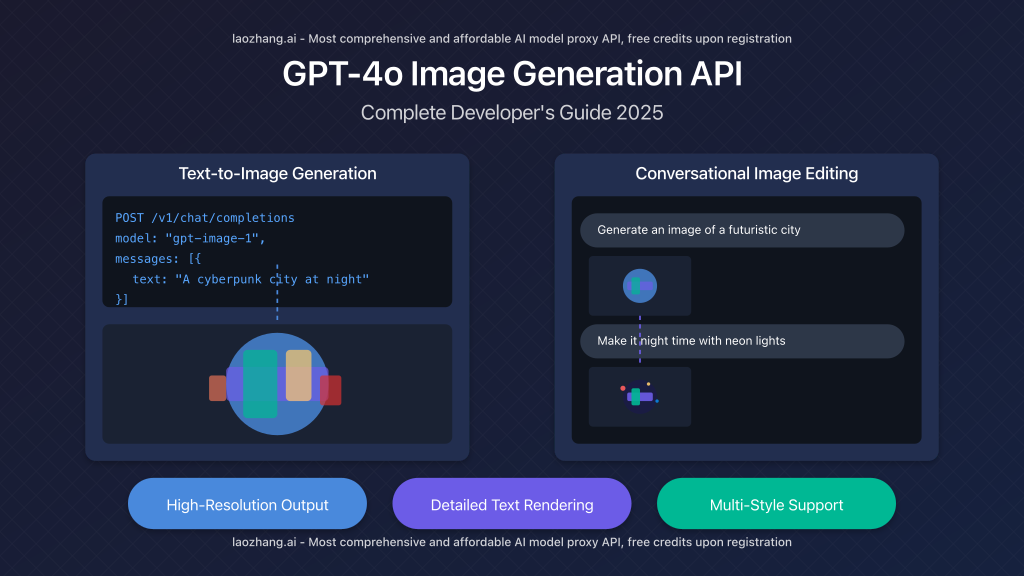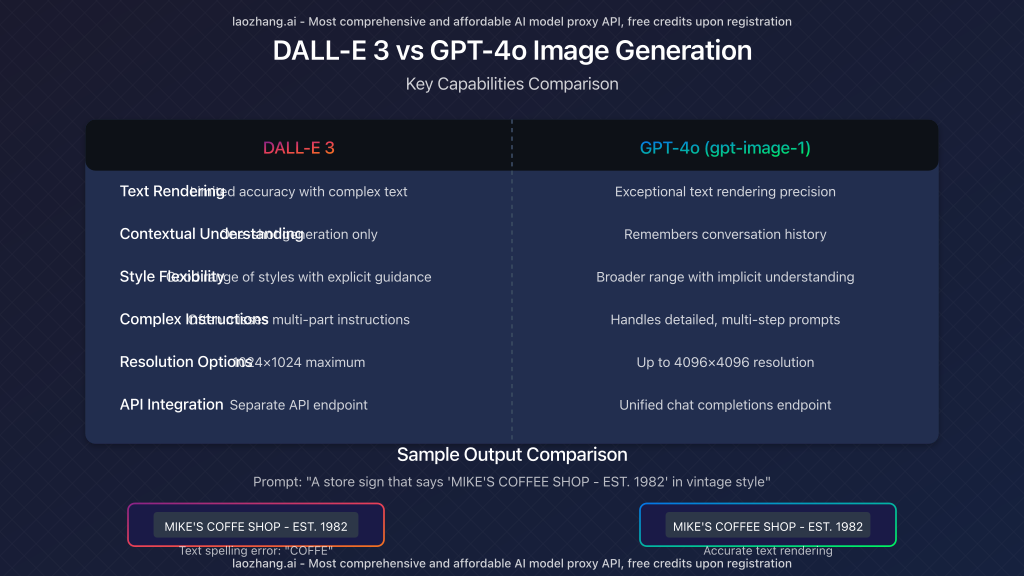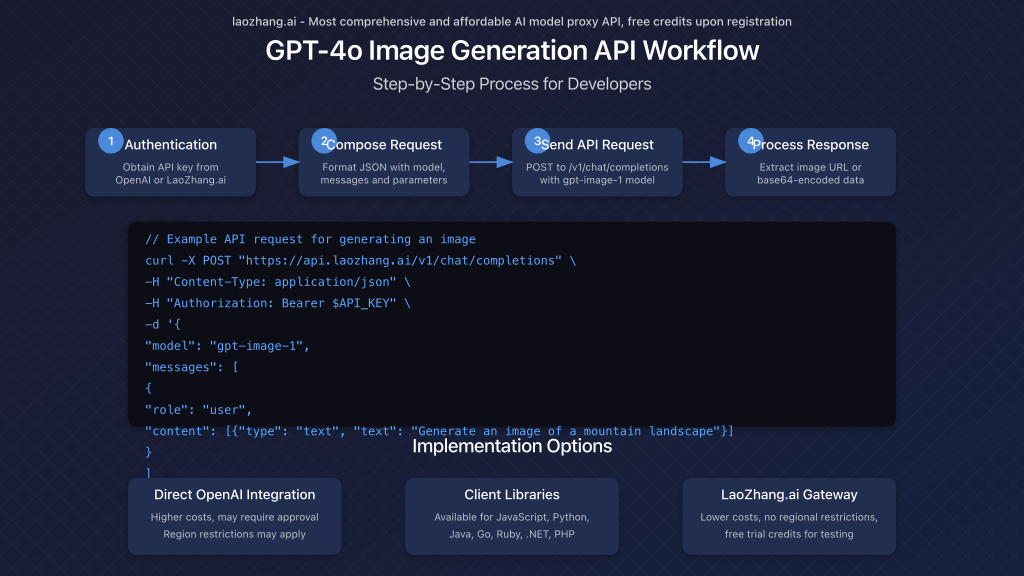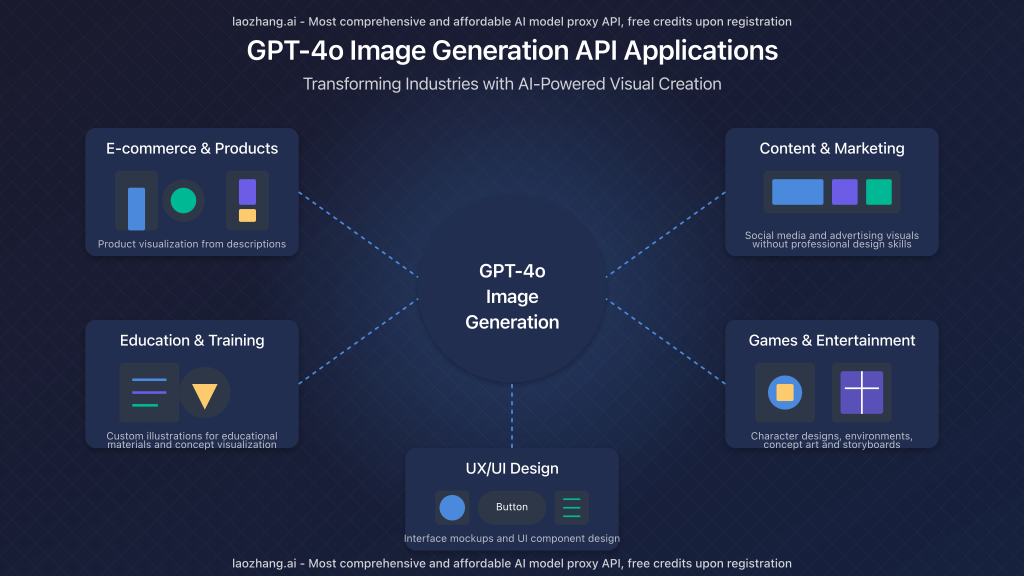The release of GPT-4o image generation capabilities has revolutionized AI-powered visual creation. After months of anticipation, OpenAI has finally made this powerful technology available through their API as gpt-image-1, enabling developers to integrate these capabilities into their applications. This guide provides everything you need to know about accessing, implementing, and optimizing the GPT-4o image generation API in 2025.

What is GPT-4o Image Generation API?
GPT-4o image generation API (officially released as gpt-image-1) represents OpenAI’s most advanced text-to-image generation capability. Unlike previous models like DALL-E 3, gpt-image-1 leverages GPT-4o’s multimodal understanding to produce images with remarkable accuracy, especially when handling detailed text rendering, complex instructions, and maintaining conversational context.
Key capabilities that distinguish the gpt-image-1 API include:
- Exceptionally accurate text rendering in generated images
- Ability to follow complex, multi-step instructions
- Support for diverse artistic styles and visual concepts
- Stronger adherence to safety guidelines compared to earlier models
- Resolution options from 256×256 up to 4096×4096 pixels
The model was initially available only in ChatGPT’s interface starting in March 2025, with API access officially rolling out on April 23, 2025.

API Access and Implementation
To access the gpt-image-1 API, you need an OpenAI API key with appropriate usage limits. The implementation follows OpenAI’s standard API patterns, with some specific parameters for image generation:
curl -X POST "https://api.openai.com/v1/chat/completions" \
-H "Content-Type: application/json" \
-H "Authorization: Bearer $API_KEY" \
-d '{
"model": "gpt-image-1",
"stream": false,
"messages": [
{
"role": "user",
"content": [
{
"type": "text",
"text": "Generate an image of a futuristic city with flying cars"
}
]
}
]
}'Key Parameters and Options
The API supports several configuration options to fine-tune your image generation requests:
- size: Controls output resolution (256×256, 512×512, 1024×1024, 2048×2048, or 4096×4096)
- quality: Standard or HD options affecting detail level and generation time
- style: Natural or vivid rendering approaches
- n: Number of images to generate per request (1-4)
- response_format: Output format (url or b64_json)
Response Structure
The API returns a JSON response containing either image URLs or base64-encoded image data, depending on your configuration:
{
"created": 1714018693,
"data": [
{
"url": "https://...",
"revised_prompt": "A futuristic cityscape with sleek flying cars..."
}
]
}
GPT-4o Image Generation API Pricing
Understanding the cost structure is essential for planning your implementation. As of May 2025, OpenAI’s pricing for gpt-image-1 is:
| Component | Cost |
|---|---|
| Text input tokens (prompt text) | $5 per 1M tokens |
| Image generation (1024×1024) | $0.04 per image |
| Image generation (2048×2048) | $0.08 per image |
| Image generation (4096×4096) | $0.16 per image |
High-resolution images and complex prompts with many tokens can quickly increase costs. Monitor your usage carefully, especially during development and testing phases.
Optimizing Image Generation Results
Through extensive testing, we’ve identified several strategies to get the best results from the GPT-4o image generation API:
1. Detailed Prompt Engineering
The quality of your prompts directly affects image output. Effective prompts typically include:
- Clear subject description with specific details
- Environmental context (lighting, background, atmosphere)
- Style references (photorealistic, watercolor, abstract, etc.)
- Composition guidance (close-up, landscape, portrait)
2. Iterative Refinement
One of GPT-4o’s strengths is the ability to refine images through conversation. Implement a feedback loop in your application allowing users to request specific adjustments to generated images.
3. Prompt Templates
Develop standardized templates for different image types to ensure consistent results:
// Product visualization template
`Create a professional product photo of a [PRODUCT] with [SPECIFIC FEATURES] against a [BACKGROUND]. Style: [STYLE]`
// Character design template
`Design a character who is a [PROFESSION/TYPE] with [PHYSICAL ATTRIBUTES] wearing [CLOTHING]. The character should appear [EMOTION/POSE] in a [SETTING] environment.`
Accessing GPT-4o API Through LaoZhang.ai
While OpenAI’s direct API access is available, many developers face challenges with rate limits, regional restrictions, or high costs. LaoZhang.ai offers a cost-effective alternative as a unified API gateway for accessing GPT-4o image generation alongside other leading AI models.
Benefits of Using LaoZhang.ai:
- Significantly lower pricing compared to direct API access
- Free trial credits for development and testing
- Unified API interface for GPT, Claude, and Gemini models
- No regional restrictions
- Reliable performance with high uptime guarantees
- Simple registration process with instant access
Implementation Example with LaoZhang.ai
curl -X POST "https://api.laozhang.ai/v1/chat/completions" \
-H "Content-Type: application/json" \
-H "Authorization: Bearer $API_KEY" \
-d '{
"model": "gpt-image-1",
"stream": false,
"messages": [
{
"role": "user",
"content": [
{
"type": "text",
"text": "Generate an image of a futuristic city with flying cars"
}
]
}
]
}'Register at LaoZhang.ai to start with free credits and explore the full potential of GPT-4o image generation at reduced costs.
Common Applications and Use Cases
The GPT-4o image generation API is enabling innovative applications across multiple industries:
E-commerce and Product Visualization
Generate product images from descriptions, create product variations, or visualize customized items before production.
Content Creation and Marketing
Produce high-quality visual content for social media, advertisements, blogs, and presentations without professional design skills.
Education and Training
Create custom illustrations for educational materials, visualize complex concepts, or generate scenario-based training visuals.
Game Development and Entertainment
Generate concept art, character designs, environment sketches, and storyboards to accelerate creative workflows.
UX/UI Design
Quickly prototype interface designs, create custom icons, or visualize user journeys based on text descriptions.
Limitations and Considerations
Despite its impressive capabilities, there are important limitations to consider:
- Safety filters may restrict certain types of content generation
- Complex scenes with many interacting elements may not render perfectly
- Very specific brand identities or exact likeness reproduction remains challenging
- API costs can escalate quickly with high-resolution or high-volume generation
- Response times vary based on complexity and server load
Frequently Asked Questions
Is GPT-4o image generation the same as DALL-E 3?
No. While both are OpenAI products, GPT-4o image generation (gpt-image-1) is a newer, more advanced model with superior text rendering, better instruction following, and improved contextual understanding.
What’s the difference between gpt-image-1 and the ChatGPT interface?
They use the same underlying technology, but the API version (gpt-image-1) gives developers programmatic control and integration capabilities that aren’t possible through the ChatGPT interface.
Does the API support image editing or only generation?
The API currently supports both text-to-image generation and conversational image editing, allowing for iterative refinement of generated images.
Can I use GPT-4o image generation commercially?
Yes, OpenAI permits commercial use of images generated through their API, subject to their terms of service and content policy. Always review the latest terms before implementation.
How does LaoZhang.ai offer lower prices than direct API access?
LaoZhang.ai optimizes API requests, utilizes bulk purchasing power, and operates with lower overhead costs compared to major providers, passing these savings to developers.
Conclusion
The GPT-4o image generation API represents a significant advancement in AI-powered visual creation. With its official release as gpt-image-1, developers now have access to capabilities previously only available through ChatGPT’s interface. Whether accessing the API directly through OpenAI or via cost-effective alternatives like LaoZhang.ai, this technology enables new creative possibilities across industries.
By understanding the API’s capabilities, optimizing your prompts, and implementing best practices, you can leverage GPT-4o’s image generation capabilities to create stunning visuals programmatically while managing costs effectively.
Start experimenting with the API today to explore how it can enhance your applications and creative workflows.